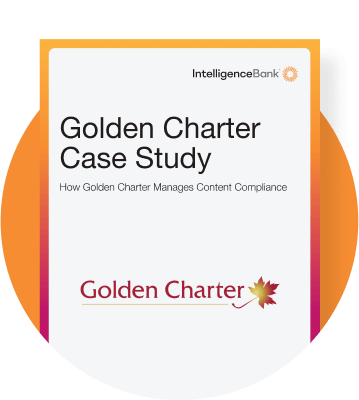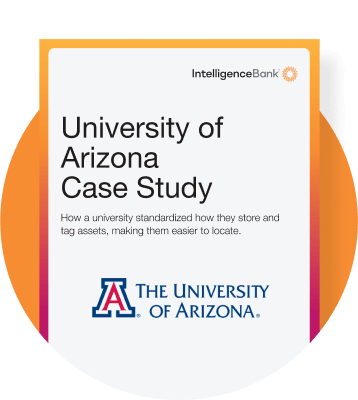The relationship between financial services Marketing and Compliance teams often feels like a high-stakes tennis match—one side serves a creative campaign, while the other returns with a powerful backhand to ensure it aligns with regulatory guidelines.
And on it goes, with rallies that are often Wimbledon-worthy in length.
But while we can all relate, it’s not a game. It’s a frustrating, exhausting daily exercise that chews up head hours of expensive team members.

Using anonymized, aggregated client data from the major financial institutions that work with IntelligenceBank, we break down our findings, highlighting types and volume of feedback as well as the time attributed to the process. The data shows a pattern of behavior that lights the path toward launching approved content faster via automation and better collaboration between departments.
What Are Examples of Feedback from Compliance Teams to Marketing Teams?
The financial sector is one of the world’s most heavily regulated industries, with strict rules governing everything from major advertising claims to the size of the fine print in product offers. Compliance teams responsible for getting this right have a big job on their hands – particularly in light of the growing volume of digital creative assets being generated year-on-year. Each and every marketing asset must meet legal, regulatory, and internal standards.
It’s therefore unsurprising, the feedback they provide marketing and brand managers revolves around risk reduction—whether it’s adjusting copy to meet disclosure requirements, changing visual elements for brand consistency, or flagging potentially misleading statements or visuals. Here are common examples:
Incorrect or outdated disclaimers
Original text: “Company does not guarantee error- free functionality with unaccredited POS vendors.”
Should say: “Company does not guarantee error-free functionality with unaccredited POS systems.”
Missing regulatory disclosures
Comment: “Need to include DM opt out wording – see marketing checklist for details”
Failure to Include State-Specific Disclosures
Original Text: “Get a premium account with no fees for the first year.”
Comment: “Please include state-specific disclosure for California. You must include a disclaimer regarding ‘no-fee periods’ as per state law.”
Requests for specific legal language:
Comment: “Please add Access here so it reads Customer Access Number.”
Original text: “Customer Number”
Product-specific disclosure issues
Original text: “$99 annual card fee for the first year ($124 thereafter) plus an annual $75 Rewards Fee~”
Should say: “$124 Annual Fee plus an annual $75 Rewards Fee~”
Missing Disclaimers for Third-Party Partnerships
Original Text: “Enjoy exclusive rewards with (partner company)!”
Comment: “Please add a disclaimer clarifying the nature of the partnership, such as: “(Partner company) is a third-party partner. Terms and conditions for rewards may vary.'”
Failure to Disclose Minimum Requirements
Original Text: “Apply now and get a credit limit of up to $10,000.”
Comment: “Please specify the conditions required to qualify for this limit, such as: ‘Credit limit subject to credit approval. Higher limits available for qualified applicants.'”
While a significant portion of feedback from finance compliance teams relates to legal requirements, maintaining brand consistency across all marketing materials also forms part of the feedback. The type of feedback provided focuses on upholding established guidelines for logos, taglines, tone of voice, imagery and color palettes across all brands, sub brands and partnerships. For example:
Incorrect brand name usage Original text: “Company name (first) Company name (last)”
Should say: “Company name (first). Company name (last)”
Inconsistent capitalization
Original text: “Company bonus Cashback”
Should say: “Capital not consistent with the rest of the document. Should be “Bonus Cashback’, context: “Company Bonus Cashback”
Logo-related issues
Comment: “Please use bold font – all uppercase for the logo.
Inconsistent tone
Comment: “‘Don’t miss’ is this the right language when we’ve automatically applied the rate.?”
Inappropriate language for the brand
Comment: “Can we rework this sentence? It’s not so much ‘another one’ but instead when you are consolidating.”
Incorrect Use of Brand Taglines
Original Text: “Your Financial Partner in Success”
Should be: “The official tagline is ‘Your Trusted Financial Partner.’ Please use the registered tagline to ensure consistency across all campaigns.”
Misaligned Imagery with Brand Guidelines
Comment: “Please replace the image of the city skyline with dark dramatic lighting with an approved asset from the DAM that reflects our brand’s lighter, more optimistic visual style. Our brand guidelines call for imagery that conveys trust, stability, and optimism.”
Color Palette Issues
Comment: “Please ensure the highlight text ‘4%’ is in our brand’s signature blue (#6495ED) to maintain consistency with our visual identity.”
How Many Review Notes Do Compliance Teams Create for Marketing Teams in a Year?
And don’t think it’s just Legal and Compliance making all the notes. Remember the tennis match? Marketers use review notes when providing feedback to legal teams, particularly when they need clarification or further input from Legal. This back-and-forth documented process ensures that both the marketing team’s objectives and the legal team’s regulatory requirements are met. It also serves as a point of reference for audit purposes.
The purpose of analyzing the volume and nature of review notes was to assess how much of the back-and-forth could be eliminated. Specifically, how many notes were made up of repetitive corrections for standard rules that could be identified and addressed right away.
Based on anonymous client data extracted from small, medium and large firms in the finance sector, we were able to quantify and categorize the sheer volume of comments occupying Legal and Marketing team’s time. The volumes below depend on several factors, including the size of the marketing team, the complexity of the content, and the frequency of campaigns.
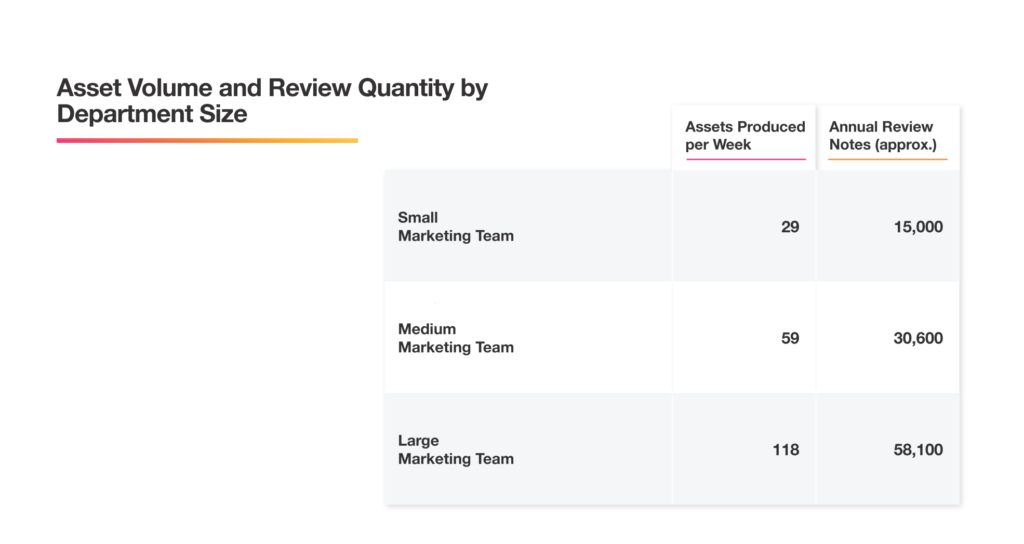
The average amount of comments per marketing asset ran at 10.
How Can Automation Reduce the Need for Repetitive Manual Reviews in Compliance Checks?
While we’ve well and truly established the importance of reviews, clients report their ultimate goal is to reduce the back-and-forth between Marketing and Legal. Their concern isn’t about achieving flawless creative assets on the first attempt, but rather the need to address the growing content approval bottlenecks by getting standard rules right. Compliance teams’ ability to keep up with reviews in light of expanding content requirements and short deadlines is becoming increasingly compromised. Compounding this is the sense of frustration around the time wasted on repetitive corrections relating to fundamental finance compliance laws.
Automation can significantly reduce this load by streamlining the process of checking content against established guidelines. Here’s how:
AI-Powered Content Risk Detection
Risky language, such as exaggerated financial claims or incomplete disclosures can all be flagged in real-time either at brief, copy or artwork stage. Live webpages and Google Ads can also be reviewed for compliance. The platform identifies potential risks using custom rules or pre-prepared industry specific out-of-the-box rule libraries such as FINRA, FDIC and the FCA. This technology allows marketers to take a proactive approach to standard compliance issues before submitting content for final approval. It greatly reduces the manual effort required in the review process while providing a high degree of accuracy.
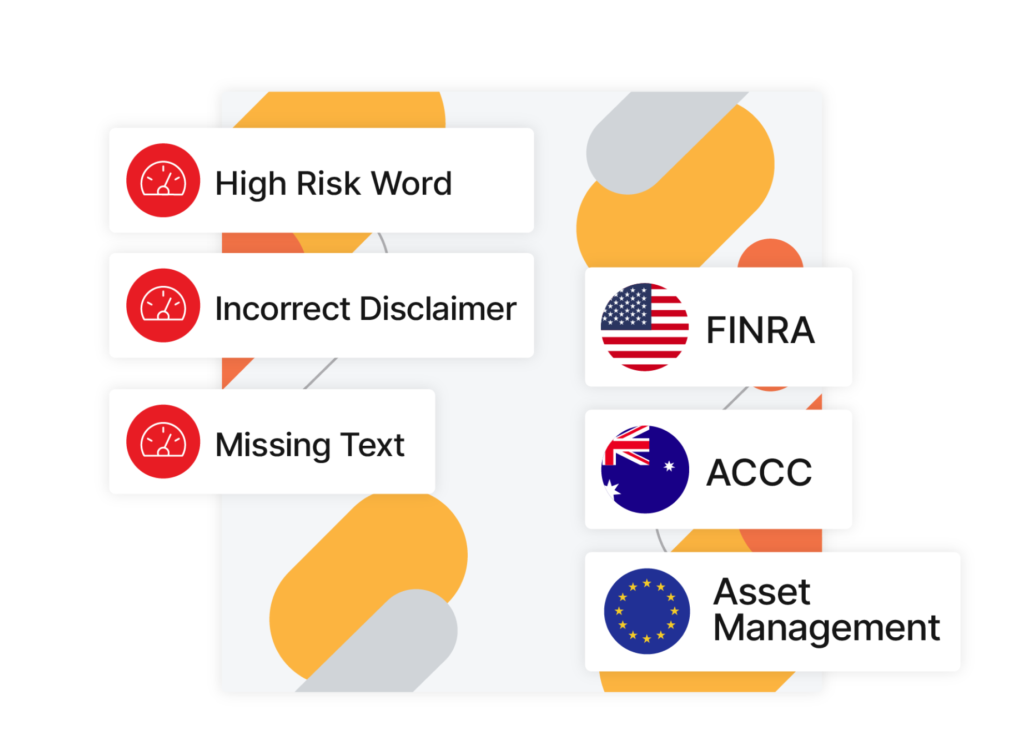
Automated Disclaimer Insertion
The software includes a disclaimer engine that automatically populates briefs with the appropriate legal disclaimers based on the medium, location, and product. This ensures that all necessary legal information is included without manual intervention, streamlining the compliance workflow.
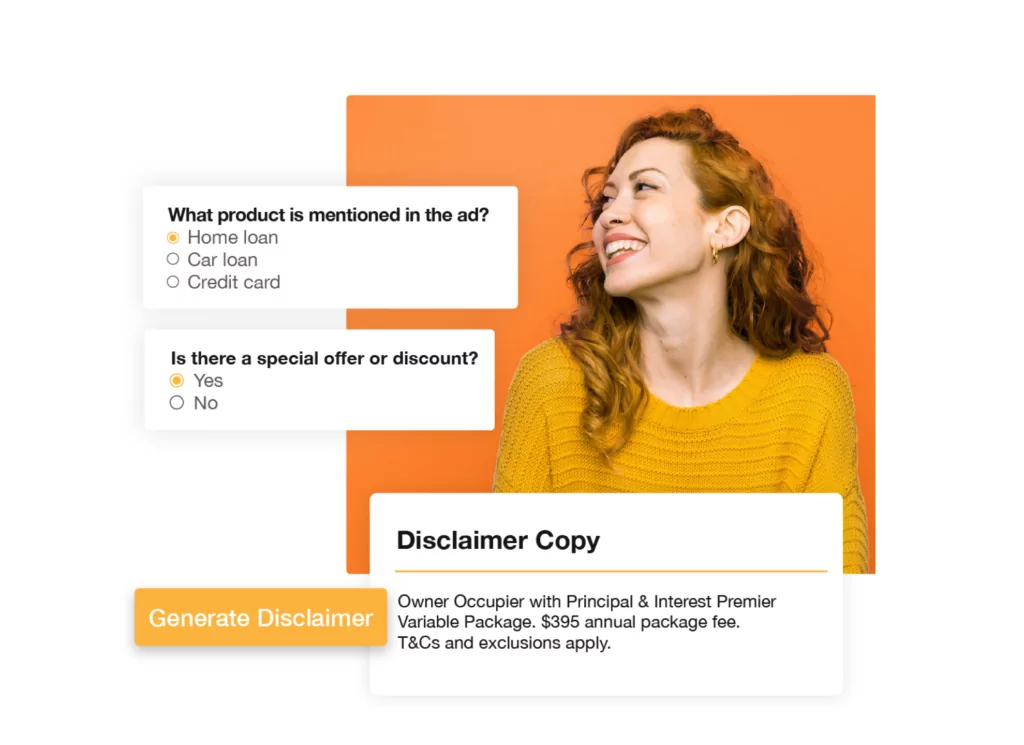
Dynamic Creative Templates
Pre-approved creative templates that lock in essential compliance requirements while allowing for customization are a tremendous help for high volume tightly regulated organizations. They allow marketers to create compliant content efficiently, minimizing the need for extensive manual reviews. They are especially useful when dealing with large remote teams and franchisees.

Content Approval Workflow Automation
Workflows are the vehicle that sees creative production through from brief to launch. They integrate with brand approved assets and importantly provide high visibility to all stakeholders when it comes to review comments, approval history and version control. They incorporate functions such as task management boards, proofing, markups and live content review tracking. Workflows connect to popular third party software like Adobe and Getty as well as your entire digital creative asset repository.

Automated Brand Portals
Online brand portals help stem the tide of marketing requests, automate answers to frequently asked questions and automate access to approved branding elements. Having 24/7 access to the latest downloadable brand assets minimizes the chance of internal and external content creators going off-piste. By using automated brand portals, teams can self-serve, with accurate content that automatically aligns with brand standards reducing the need for multiple rounds of review and approval.
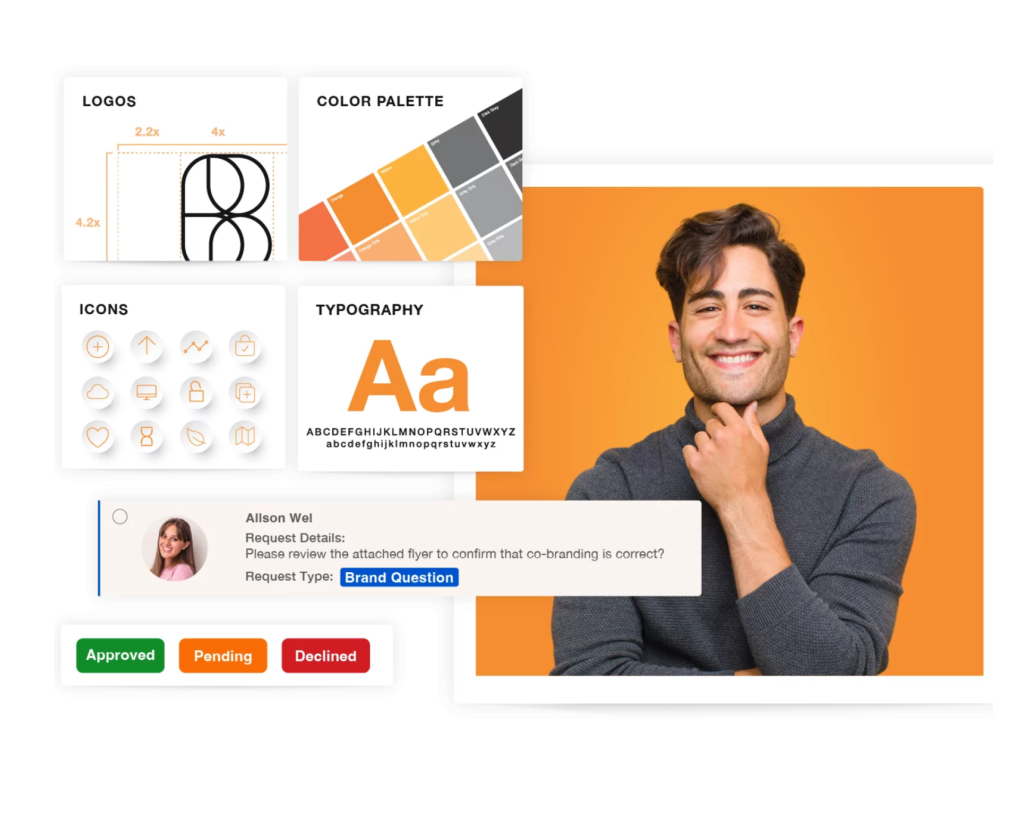
What Specific Legal and Compliance Tasks Can Be Automated to Improve Accuracy and Efficiency?
Here are the day to day functions performed by finance compliance teams the world over that can be greatly sped up – yet at the same time – be less vulnerable to human error:
Disclosure Checks
Automated systems significantly improve the efficiency of checking required legal disclaimers and regulatory disclosures in marketing materials. For example, tools powered by AI can automatically detect whether mandatory disclaimers – such as interest rate disclosures, terms and conditions, or risk warnings – are included in financial ads, insurance offers, or promotional campaigns.
Incredibly, automation can also check the visibility and positioning of these disclosures, verifying that they are placed where consumers can easily find them, following best practices and regulatory guidelines. By automating this task, teams can save valuable time that would otherwise be spent manually reviewing each piece of content, while also ensuring that nothing is overlooked or omitted, ultimately reducing the likelihood of fines or legal challenges.
Risk Identification
Using AI-powered risk review tools identify potentially misleading statements or content that could violate compliance regulations. For instance, unsubstantiated guarantees, or misleading representations about a product’s benefits or returns. Automation tools can cross-reference content with predefined risk rules or regulations (such as truth-in-advertising standards or financial disclosure laws), instantly flagging content that might lead to consumer deception or regulatory breaches.
In addition, risk reviews can help identify non-compliant offers, such as promotions that fail to disclose critical terms or conditions, or content that violates advertising restrictions. These automated reviews drastically reduce manual effort and human error by quickly identifying risky language or elements, enabling compliance teams to focus on more complex review issues rather than sifting through large volumes of content for potential problems.
Brand Consistency
Automation plays a key role in this process by flagging out of date logos, incorrect fonts, color and messaging. It can even pick up whether logos are scaled correctly, and that the brand’s primary font is used in headings or body text etc. This ensures that all content, regardless of where it is used, maintains the brand’s integrity, protects its reputation, and adheres to legal and compliance standards. In large-scale campaigns, where multiple teams or external vendors may be involved, automation helps guarantee that the brand message is unified and legally compliant across all materials, without the need for multiple rounds of manual review.
How Much Time Can Compliance Teams Save with Review Automation?
Automating compliance reviews can drastically reduce the time spent on manual checks, enabling compliance teams to focus on higher-value tasks. IntelligenceBank analyzed the interaction between Marketing and Compliance teams and took a deep dive into the quantity and nature of the comments. The results were compared across small, medium, and large financial services firms and identified areas with significant time saving potential. The variance in time saved can be directly tied to the volume of content produced by each business size, rather than the time required to review each individual asset.
While more detail can be found in our 2025 Financial Services Marketing Compliance Guide here is a summary of results feedback type per comment type. The breakdowns are consistent across all teams, regardless of their size.

How Can Automation Enhance Consistency in Language and Terminology Across Marketing Materials?
Consistency is crucial in the financial services industry, not just for compliance, but for brand integrity. Automation can help by:
Standardizing Terms
Automatically checking for consistent use of legal or financial terms like “annual percentage rate (APR)” or “terms and conditions.”
Enforcing Brand Guidelines
Ensuring that marketing materials comply with internal brand guidelines (e.g., tone of voice, logo placement, color schemes) to maintain consistency across campaigns.
Reducing Manual Checks
Automation reduces the need for manual proofreading, which can be time-consuming and error-prone, ensuring that all content remains consistent across channels.
What Potential Cost Savings Can Automation Bring to Compliance and Legal Review Processes?
Relying on manual processes to perform tasks that can be performed using automation and AI is a no brainer. The issue comes down to the Return On Investment (ROI) of person vs machine. The ROI is weighed up on these factors:
- Reducing Review Times / Lower Labor Costs
With automated tools, review times can be cut down from days to hours, or even minutes. The findings from our deep dive into our financial services clients’ review habits, we have been able to quantify a range of potential time savings using automation and AI can bring:
- Increased Accuracy
Removing the risk of human omission or inconsistent feedback, automation provides more consistent responses that have been ratified by senior management. - Faster Time to Market
Marketing teams can get their campaigns approved faster, leading to more timely launches and less missed opportunities.
If you’d like to learn more about the interplay between insurance sector Marketing and Compliance teams, as well as trends, threats and solutions for the industry for 2025, download our guide below.
Changing the Game Between Marketing and Compliance
Research showed that 80% of both Marketing and Legal/Compliance teams feel they have an “us vs. them” relationship. But when it comes down to it, their goals are more aligned that they may first think. They all want the same outcome – effective compliant creative in the market and off their desks.
With automation and AI-powered tools, you can switch the furious tennis match to a thoughtful game of golf.
If you’d like to find out more about how to automate your marketing compliance, we’d love to show you. Contact us for a live demonstration here.



